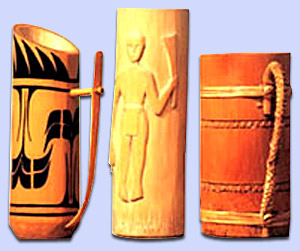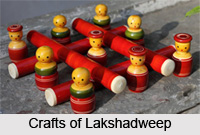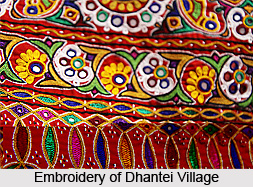 Crafts of Haryana have never been widely acclaimed but have always supported the local economy. The crafts have never received any royal patronage like the crafts of other states. However, Haryana has come up with interesting localized crafts like pottery, handloom, and wood carving. More than artistic showpieces the crafts are utilitarian in nature.
Crafts of Haryana have never been widely acclaimed but have always supported the local economy. The crafts have never received any royal patronage like the crafts of other states. However, Haryana has come up with interesting localized crafts like pottery, handloom, and wood carving. More than artistic showpieces the crafts are utilitarian in nature.
Types of Crafts in Haryana
Most crafts of the state are dependent on the naturally available resources as raw materials. Clay is one of them along with yarns that produce some of the finest fabrics. These encourage handicrafts items like clay crafts, weaving, dyeing, embroidery, miniature paintings, chope, Durries Bagh, etc. Villages are known for intricate weaving craft and Shawls of Haryana are next to Kashmir in popularity.
Pottery
Pottery is essentially a village craft, which ranges from single pots meant for daily use to highly decorative items. In Jhajjar in the Rohtak district pitchers of clay are in great demand, which is said to make the water sweet. Gurgaon, Jhajjar, Faridabad and Kurukshetra are famous for this terracotta craft.
Weaving craft
Haryana is renowned for the woven work like shawls, durries, robes or lungis. With pulsating colours and intricate embroidery, the shawls of Haryana called Phulkari are in great demand. The female members of the house usually make it and are extremely time consuming. Another kind of shawl called chope is simple than phulkari. The bagh (garden) is another variety of phulkari and consist of geometric patterns with green base. The darshan dwar is another shawl which is gifted to a temple by a devotee whose wish is fulfilled.
The durries of Haryana are rough and hard and are adorned with geometric designs. The most popular ones are those white triangles set against a blue backdrop. The Panipat region in Haryana is well known for this craft.
Stone craft
Stone craft of Haryana is another variety of craft, which is basically religious in concept. Intricately carved statues of Gods and Goddesses are made by craftsmen from a range of stones that are available in the region. Ancient Temples of Haryana also display exquisite stone craft of the region.
Cane and Coir Craft
Due to abundance of evergreen forests at the Himalayan foothills, cane and coir are found in abundance in the region. Baskets woven for daily use are also excellent examples of craft.
Embroidery
Phulkari is an indigenous embroidery art of Haryana that is prevalent since generations. The Phulkaris are mainly seen on Ghagra and Choli worn by the women of Haryana during the winters.
Wood Craft
Being rich in flora, artisans in Haryana uses wood as raw materials to carve different utility products which gradually transformed into wood crafts. Wooden trays, furniture, dolls, and even ornaments are famous in this region.
Leather Craft
Leather based foot wear of intricate design decorated with copper silver and silk threads and embellished with delicate work of mirrors, beads and other accessories are famous in Haryana. Rewari, Karnal and Hisar are famous for Zari juttis and Rohtak for leather work.
Jewellery making
Filigree and enamel work crafted in silver, bone and lac in traditional and folk designs worn by rural and urban people, like silver belts with stiff broad bands are intricately made by the craftsmen of Haryana. Gurgaon, Faridabad and Sirsa are famous for jewellery making. Mahendragarh is popular for lac bangles.
Paintings
Haryana is known for vibrant murals and miniature paintings. History of painting in this region dates back to Gupta period and developed immensely under Persian influence. Elaborate details from the verses of religious texts often form the themes of paintings in this region.






